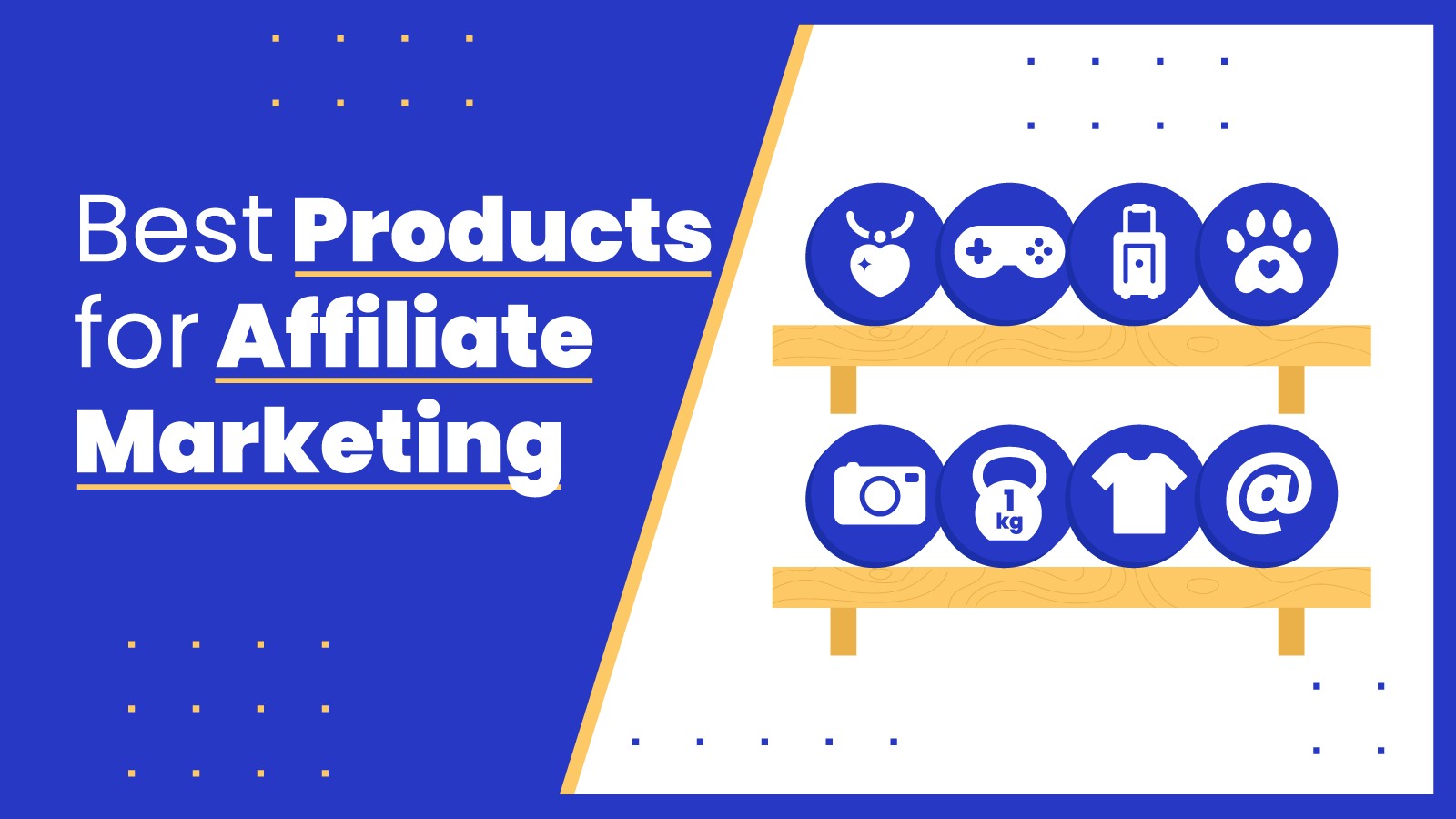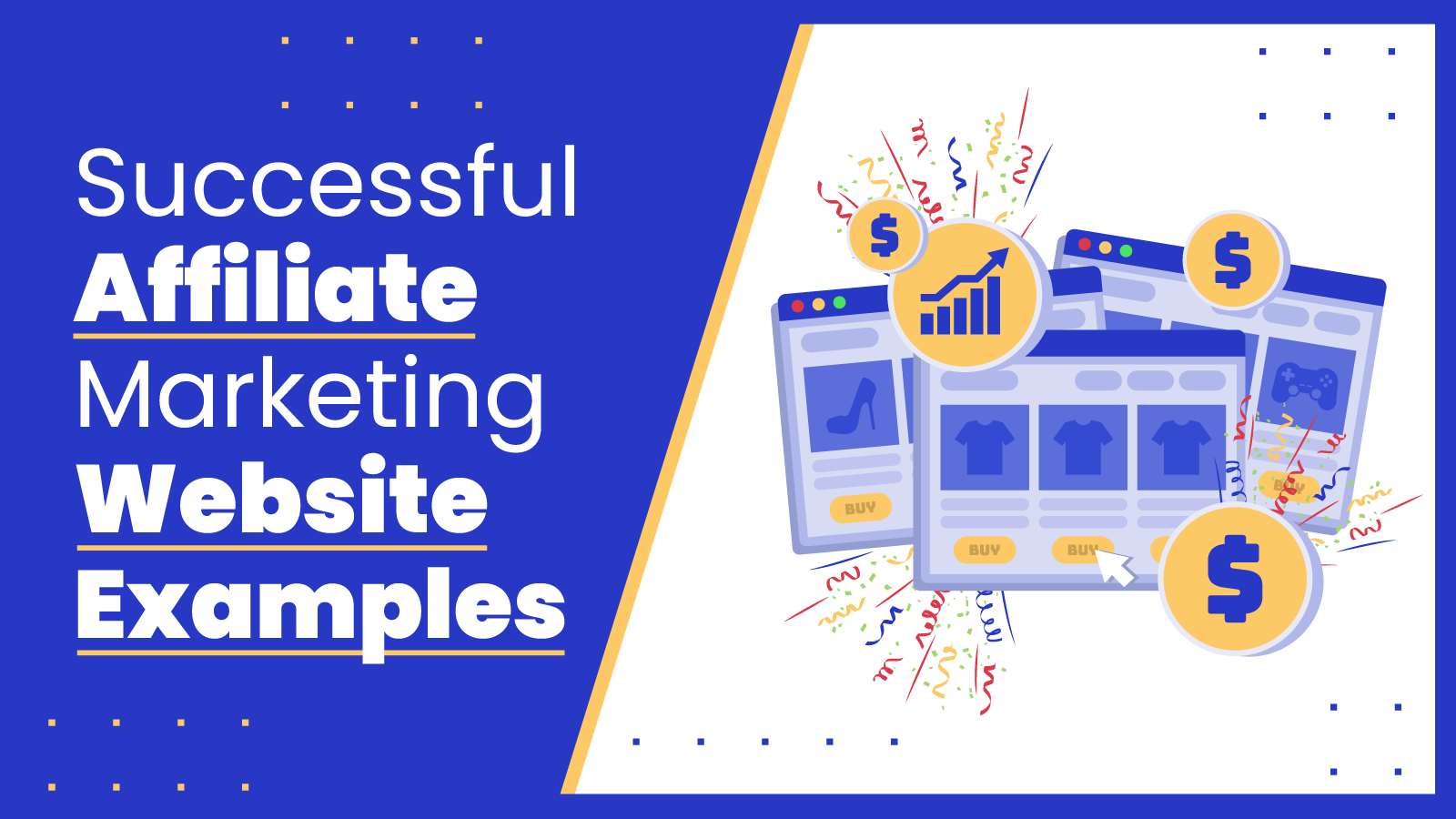Instant access to a huge market of active shoppers — that’s the power of social media. But to succeed in social media affiliate marketing, you need to know the best platforms and strategies for conversions so you aren’t buried by the algorithms and the noise.
That’s where we come in.
At Authority Hacker, we’ve spent years mastering affiliate marketing. In this guide, we’ll share our insights and help you turn likes and follows into cash.
How Affiliate Marketing on Social Media Works
Affiliate marketing on social media means sharing affiliate links or unique discount codes on your posts and profiles. When people buy products using your links or codes, you earn money.
While you can direct your followers straight to an affiliate link, many affiliates have their own websites or online shopping pages that contain these links. And social media is a great way to drive traffic to these links.
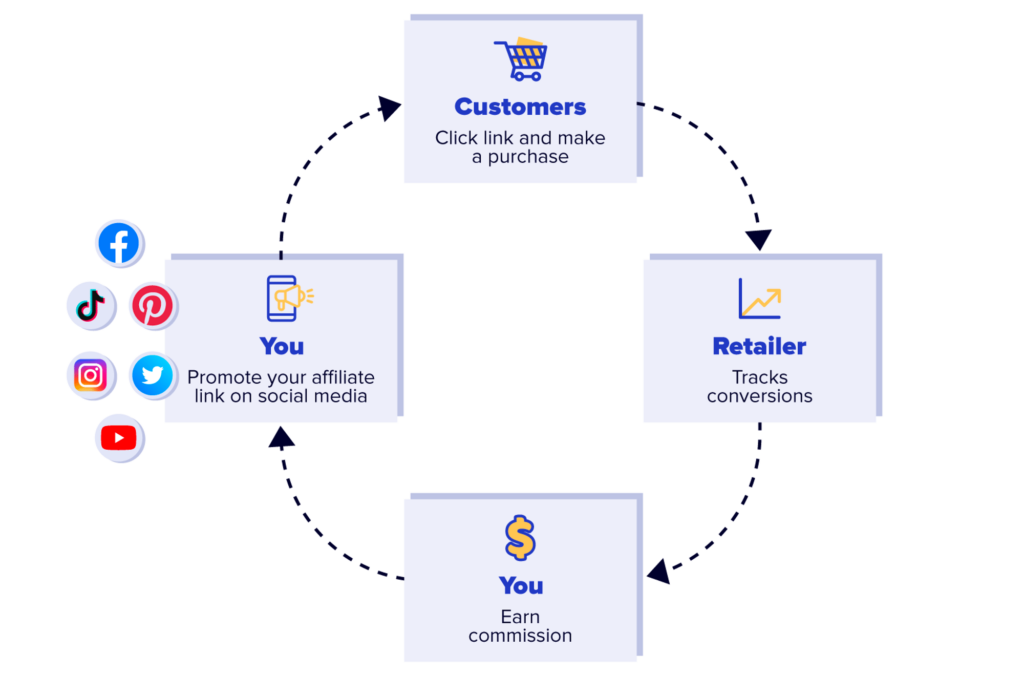
You may be thinking, “Is it really that simple?” Unfortunately, it’s not as easy as blasting your links out to each and every social media platform. Building a following as an affiliate marketer can be challenging, but when done correctly, you can develop a reliable strategy to monetize your content.
For example, the folks at Everyday Carry use Instagram-worthy images to draw visitors to their posts, then add simple calls to action in their Instagram captions, prompting followers to explore their products via the link in their bio.

Social media is a popular channel for affiliates because it offers many benefits:
Reach a huge audience. Three-quarters of US consumers use some form of social media. For context, that’s even higher than the proportion of Americans who drink alcohol.
Target engaged consumers. It seems we’re addicted to social media, with the average American spending 1,300 hours a year checking their socials. For affiliate marketers, it makes sense to target people where they’re already hanging out online.
Drive qualified traffic. Social networks are an excellent source of warm leads, with 29% of consumers purchasing items on social media at least once a week.
Enjoy low startup costs. Creating a social media account is totally free, making it one of the cheapest channels to get started as an affiliate marketer.
Build an organic following. If you choose the right niche and create interesting content, it’s totally possible to build a large following without paying a cent in ad dollars.
Best Social Media Platforms for Affiliate Marketing
Choosing the best social media platform for affiliate marketing depends on your niche, goals, content style, and budget. Each platform has unique features, audiences, and best practices.
We’ve evaluated the top platforms based on external traffic, audience size, and just how easy it is to make that all-important content to help you make the best decision for your affiliate strategy.
1 YouTube
YouTube is the world’s #1 video platform and the second largest search engine, making it a popular choice for affiliate marketing in any niche. With its excellent organic reach, it’s possible to succeed on YouTube without spending money on ads. However, it can be competitive and intimidating for beginners.

To succeed as a YouTube affiliate, it’s important to understand what types of videos resonate with viewers. Educational and entertaining content is a great fit. Your YouTube content strategy should focus on showcasing affiliate products in a fun and engaging way. Do that through:
Tutorials: Content that explains how to solve a problem, achieve a goal, or use a product.
Comparisons: Comparing two or more similar products.
Comparisons: Comparing two or more similar products.
Unboxings: Sharing the excitement of unpackaging a shiny, new product — especially popular in beauty and high-tech gadget niches.
Testimonials: Sharing the experiences of real-world customers.
Buying guides: Roundups of multiple products in a specific category.
Don’t forget to place your affiliate link in the video description so viewers can easily click out to the products you’re promoting.
When creating YouTube content, always keep your audience in mind. What product features and benefits are most likely to interest them? What would persuade them to buy?
For example, Garage Gym Reviews focuses on key concerns for their audience, such as:
- Ease of assembly
- Compatibility with other gym equipment
- Suitability for different exercises
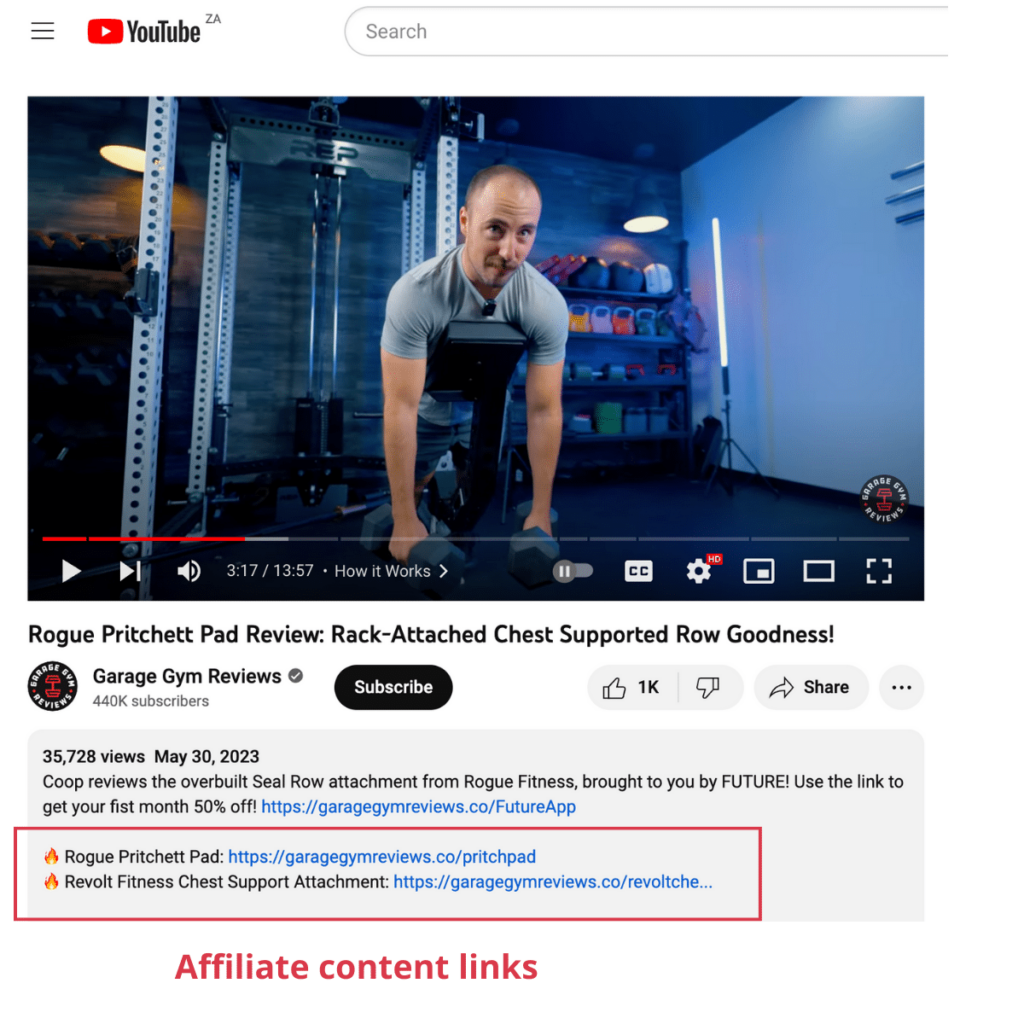
If you don’t have space (or money) to build a home gym, their content isn’t for you. But by niching down, Garage Gym Reviews generates targeted traffic that’s more likely to convert — and become loyal followers to his channel.
👉 Is YouTube the social platform for you? Check out our roundup of the nine best affiliate programs for YouTube!
2 Twitter
Twitter recently increased its maximum post length to 4,000 characters (for some users)…
…but it’s still best for short, snappy content.
With its well-educated, tech-savvy audience, Twitter is a good fit for promoting consumer electronics products (think digital cameras, cellphones, laptops, games consoles, and more).
But remember: conversation moves fast on Twitter. This isn’t the place for evergreen content. Instead, use the platform to comment on trending topics and share breaking news, just like Digital Camera World:
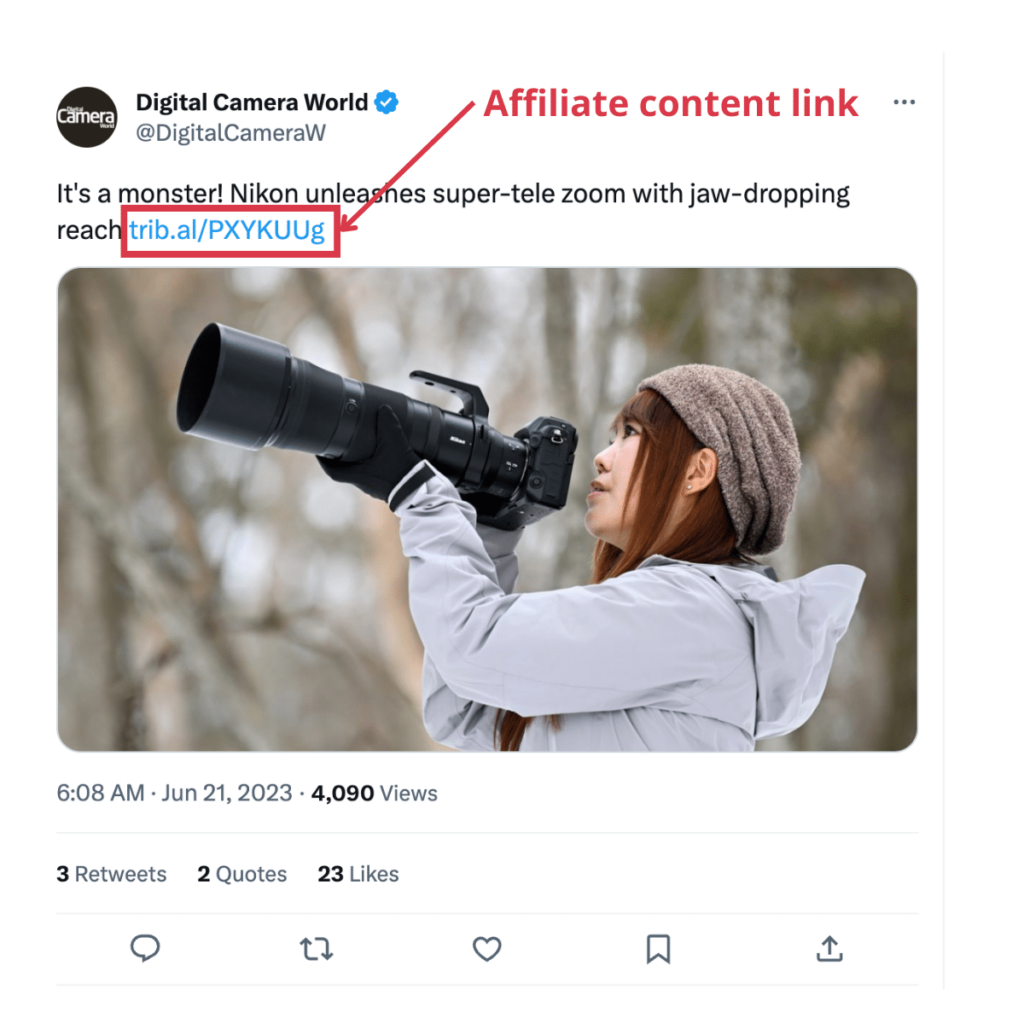
The best thing about Twitter affiliate marketing is that you can add your affiliate link anywhere. So there’s no need to mess around with bridge pages or links in bio, making it easier to generate clicks and commissions.
On the downside, Twitter kills your reach when you add off-platform links. For that reason, Twitter affiliates often create content in threads — a way of microblogging on the platform — with affiliate links added in the lower tweets — leaving the top tweets to drive engagement.
Twitter is also super competitive, so you’ll have to post a lot to grow a decent audience — and not just about your affiliate links. Tweets that drive the highest levels of engagement (and reach) tend to be funny, controversial, and thought-provoking — or all three.
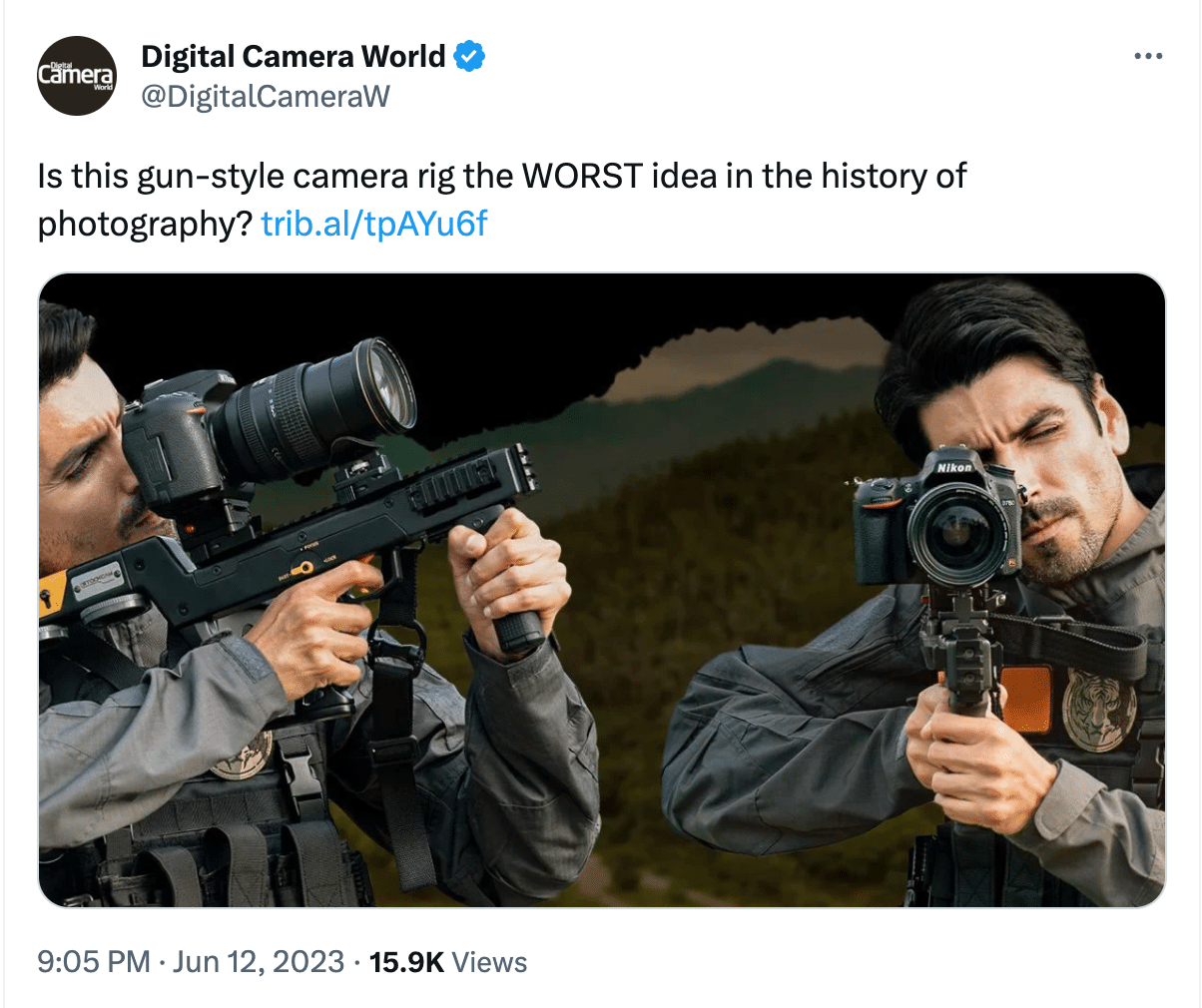
👉 Learn more about affiliate promotion on Twitter in our guide to Twitter affiliate marketing.
3 TikTok
TikTok is a young, fun-loving short video platform with a young, fun-loving user base.

It’s become the go-to social media channel for viral and trendy niches, from the hottest new skincare trend to the latest must-have life-hack product.
That video highlights the biggest problem with using TikTok to promote affiliate products: there’s no easy way to add affiliate links to your content. In a nutshell, your options are to:
- Upgrade to a (free) business account to add links to your bio
- Send traffic to another social profile (and then to your website or a product page)
- Read out coupon codes or affiliate link URLs in your videos
- Add (unclickable) links to your content description or comments, like TikTok creator Bonnierzm does here:

None of those is ideal, but TikTok’s high reach, engaged audience, and comparatively low competition are tough for affiliate marketers to overlook.
While it’s technically possible to post videos up to 10 minutes long on TikTok, the platform heavily prioritizes snappy, bite-sized content. Like YouTube, though, creating enough content for this platform is time-consuming.
As an affiliate, if you’re willing to put in the work to create enough content, we recommend using TikTok to build views and your audience. Then you can promote lead magnet content in your bio and sell directly to your email list. However, unless you have a Business account or at least 1k followers, you won’t be able to include a link in your TikTok bio.
👉 New to affiliate marketing on TikTok? Read our ultimate guide to TikTok affiliate marketing.
4 Facebook
While it’s not as popular as it used to be (especially with younger audiences), Facebook still has a huge and highly active user base.
It’s also the most popular social media platform for affiliate marketing, with 75.8% of affiliate marketers using it according to our affiliate marketing statistics page.
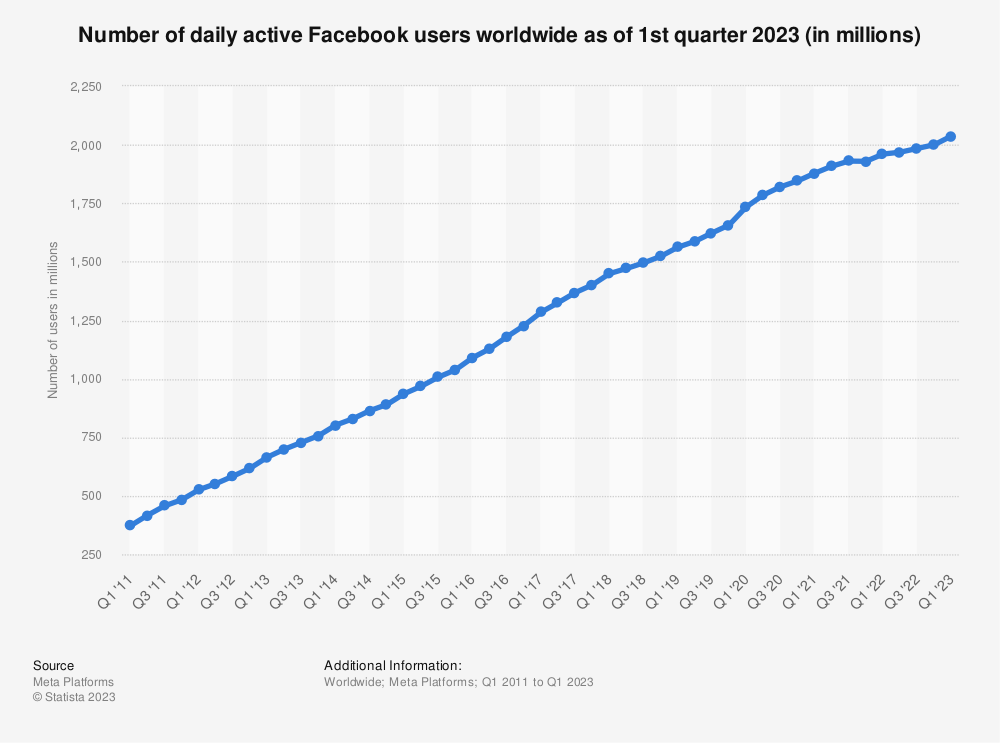
The platform is best for broad and general-interest niches such as baby products, beauty, fashion, and pets. However, if you’re promoting products with more limited appeal (like luxury travel or home security), platforms like TikTok or YouTube may be a better fit.
Facebook’s organic reach can be challenging, especially for promotional links, and the competition is intense. But there are ways to succeed as an affiliate on Facebook. The platform supports diverse content types, including long-form posts, photo and video posts, stories, and live streams.
And the reach of Facebook Pages has improved recently due to “suggested” content appearing in users’ feeds — even if they don’t follow the page. Think of it as the TikTokification of Facebook.
And then there’s the platform’s real trump card: Facebook groups. These groups are like pre-built marketing lists full of people interested in your niche.
Like Skincare and Beauty Tips, a group dedicated to — guess what? — skincare and beauty tips. Posts like this are an absolute open goal for affiliate marketers looking to recommend products:
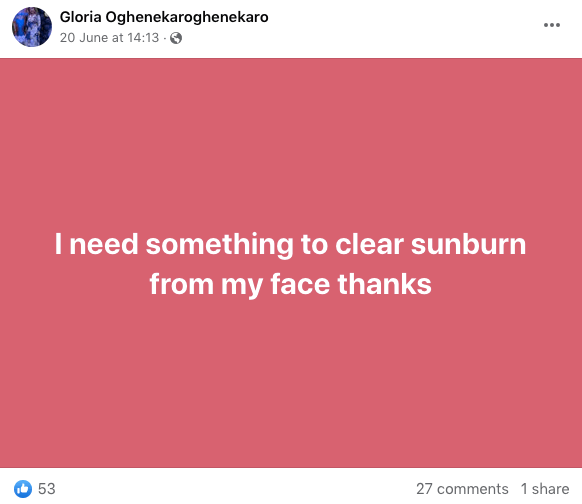
A good approach is to ask a question and let people engage and reply before sharing a solution and linking to the product or post you want to promote. This way, you won’t be banned for self-promotion and people who engaged with your post will be notified.
On Facebook, it’s important to build engagement and be helpful rather than straight-up marketing to your audience. Some groups forbid promotional links, so be sure to read the rules before posting.
👉 Find out more in our ultimate guide to Facebook affiliate marketing.
5 Instagram
With its image and video-led content formats, Instagram lends itself to highly visual, lifestyle niches-related niches like beauty, fashion, food, health and fitness, and travel.
Instagram has superb organic reach compared to most social media platforms, and the competition in most affiliate niches isn’t too fierce, allowing affiliate marketers to get eyes on their posts without resorting to paid ads.
And you can test different content formats — single-image posts, carousels, video posts, stories, Reels, and live streams — to help build your audience and promote your affiliate links.
This brings us to the big downside of Instagram affiliate marketing: adding affiliate links. Unfortunately, you can’t paste clickable links into post descriptions or comments. But you can add them as clickable buttons within Instagram Stories…

…and within your Instagram bio:

You can also use tools like Linkin.bio and Linktree to link to multiple articles or products at the same time.
👉 Is Instagram affiliate marketing right for you? Check out our roundup of the best affiliate programs for making money on Instagram!
6 Pinterest
The average Pinterest user (or Pinner) is female, well-educated and high-earning. And with its highly visual content formats — think images, infographics, and videos — the platform is a natural fit for creative niches like arts and crafts, DIY, and home improvement.
Despite its high organic reach, competition on Pinterest is still low in most affiliate-friendly niches, giving you a better chance of building a large and engaged following. Be aware that many Pinners are still in the early stages of their buying journey but shopping engagement is growing with 80% of weekly Pinners saying they’ve discovered a new product or brand on the platform.
It’s also super easy to add affiliate links on Pinterest. For instance, this post from Lantern Lane Designs contains two links to a buying guide on their blog:
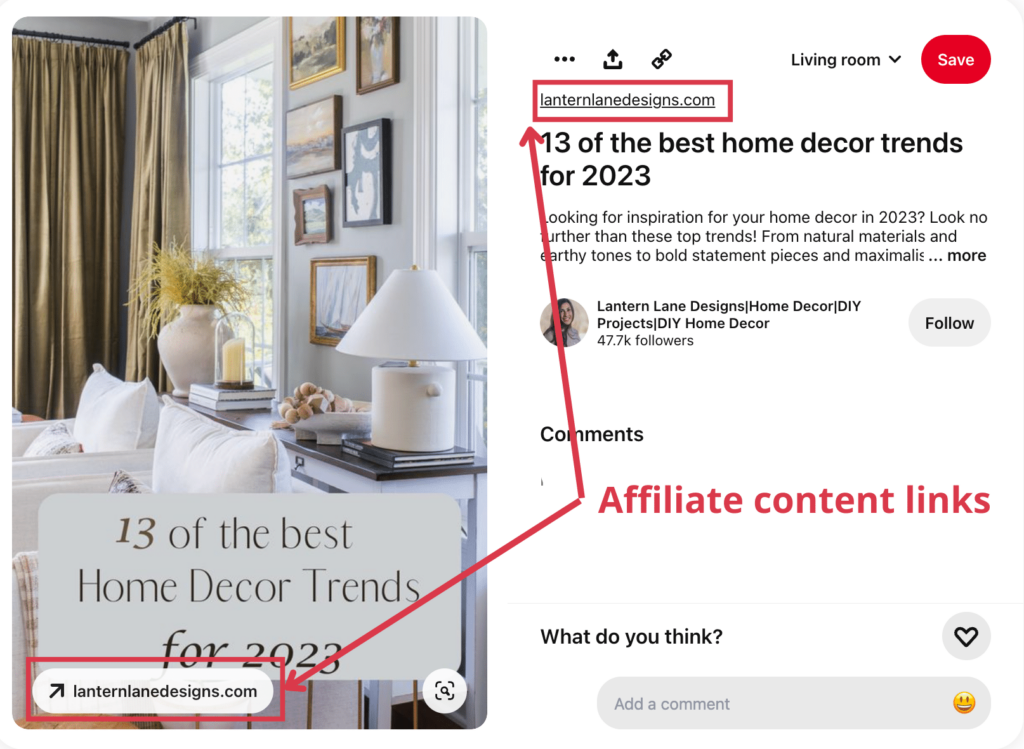
Pinterest functions like a search engine; Pinners use it to search for specific keywords, allowing creators to optimize their pins around these searchable terms.
And there’s another upside to affiliate marketing on Pinterest: the platform’s content also performs well on external search engines.
Google prioritizes imagery in searches about visual subjects (i.e. the types of topics that are best suited to Pinterest). Look at how imagery dominates the top of the SERP for this query:
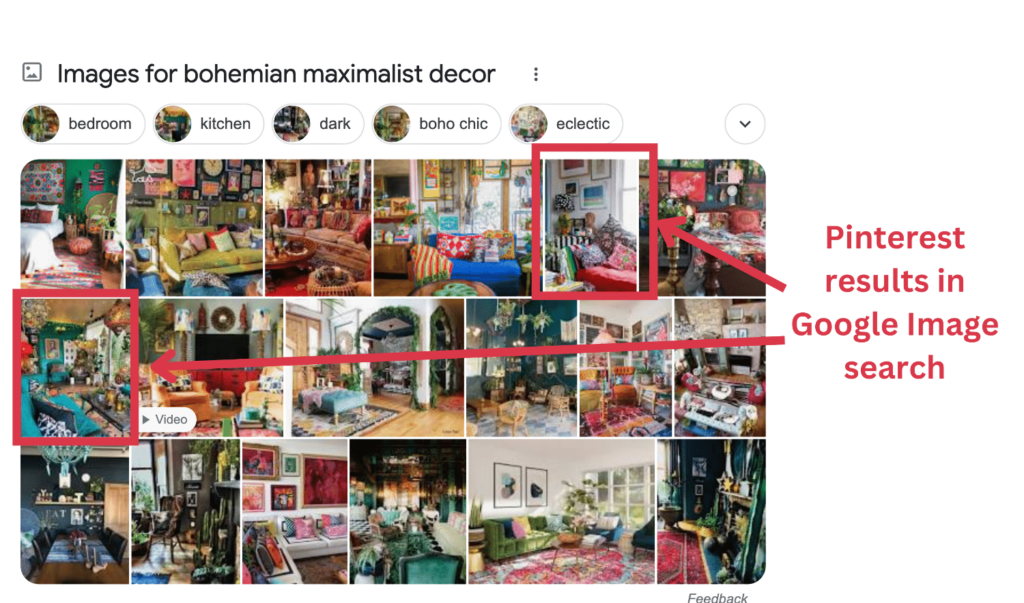
Use Pinterest to attract organic searchers to your pins — then point them toward related affiliate content on your blog.
👉 Built an audience on Pinterest? Monetize it with our top-rated affiliate programs for Pinterest.
How to Pick Social Media Platforms for Affiliate Marketing
Choosing the best social media platform for your niche and audience is essential.
To give a simple example, imagine you’re targeting Gen Z-aged gamers. Facebook likely isn’t the right platform, because your target audience represents a tiny proportion of total users. But TikTok — where almost two-fifths of users are aged 18 to 24 and 82% play games at least once a week — could be the perfect fit.
Use the following criteria when evaluating social media channels as part of your affiliate marketing strategy:
| Criteria | What to consider |
| User base size & demographics | ✔️ Does your target audience use the platform? ✔️ Are they in the majority, or just a tiny fraction of the total audience? |
| Top-performing content types | ✔️ Can you create the type of content that performs best on the platform? ✔️ Does that format fit the products you’re promoting? |
| In-niche competition | ✔️ Are other affiliates in your niche using the platform? ✔️ How do their audiences compare to yours? ✔️ Can you create content that’s at least as good as theirs? |
| Organic reach & engagement | ✔️ Can you reach your audience organically? |
| Paid media options | ✔️ Is advertising affordable and effective if you can’t reach your audience organically (or are targeting faster growth)? |
| Suitability for affiliate marketing | ✔️ How easy is it to add affiliate links? ✔️ Does the platform deprioritize content with external links? ✔️ Are there limitations on where you can post those links? |
Trust us: however obscure your niche and audience, there’s a social platform to fit.
Once you’ve found yours, it’s time to start researching affiliate programs, building your affiliate site, and creating content. Find out about next steps in our ultimate guide on how to become an affiliate marketer.
Conclusion
Social media can be an invaluable part of any affiliate marketing strategy. But the fleeting popularity of different platforms and the ever-changing nature of social algorithms make it hard to build a consistent passive income stream from social platforms alone.
Instead, we recommend using social media as one of many potential channels to drive traffic toward your own website, along with email marketing, podcasts, SEO, and paid search.
Not sure where to start? Don’t worry — Authority Hacker is here to help.
Sign up for our free training to learn seven tried-and-trust tips for building and optimizing a high-converting affiliate website.
FAQ
What Social Media is Best for Affiliate Marketing?
The best social media platform for affiliate marketing depends on your audience and niche. For instance:
– TikTok is a strong fit for targeting younger consumers
– Facebook is an excellent all-rounder, with a large audience across all demographics
– Pinterest is best suited to specific niches, like interior design and vintage fashion
Study each platform’s demographics and user base size before choosing which to use in your affiliate marketing strategy.
Do I Need Followers to Start Affiliate Marketing?
You don’t need followers to start affiliate marketing, but you will need to build a following to make money as an affiliate.
Still, that following doesn’t have to be huge. Smaller influencers see higher engagement and conversion rates than larger accounts, so don’t be put off if you only have a few hundred followers right now.
Can I Promote Affiliate Links on Social Media?
Yes, you can promote affiliate links on social media, although different platforms have different rules for including and disclosing links. For instance, you may have to add links to your bio with Instagram and TikTok. In contrast, platforms like Facebook and Twitter allow affiliate program links to be promoted through regular posts.
